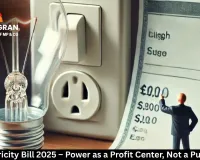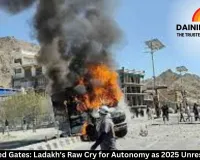India's Economic Crisis 2025: Unemployment and Inflation Grip the Nation
Digital Desk

October 2025 marks a grim milestone for India's economy, plagued by soaring unemployment, rampant inflation, and rural distress—issues critics attribute to the Modi government's policy missteps. Dubbed an "unemployment nightmare," the crisis has left millions jobless, with youth protests echoing across cities and villages.
Key culprits include demonetization's lingering effects, GST implementation flaws, and controversial farm laws that sparked widespread unrest. These, combined with trade blunders and COVID-19 mishandling, have stifled manufacturing and services, widening inequality.
Unemployment hits record highs, forcing graduates into menial jobs while families skip meals. Inflation erodes savings, exacerbating the pain.
Rural areas bear the brunt, with farmer suicides rising amid policy-induced distress. Grand infrastructure projects like high-speed trains prioritize spectacle over grassroots needs, failing to create sustainable employment.
In my opinion, the government's top-down approach ignores data-driven economics, favoring politics. Small businesses, India's economic backbone, suffocate under red tape and credit crunches. Gen Z's rage, fueled by job scarcity and AI automation, mirrors regional trends but spares India full uprisings—for now.
External factors like U.S. tariffs on Indian goods add pressure, yet domestic reforms are overdue. RBI Chief asserts resilience, but ground realities differ.
To resolve this, flexible labor laws, skill training in green sectors, and deregulation for investments are vital. Public pressure through voting and supporting locals can drive change.
This crisis isn't inevitable; bold, inclusive policies could foster equitable growth. In 2025, India must pivot from rhetoric to action to avert deeper turmoil.











